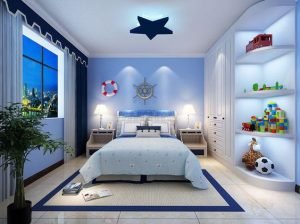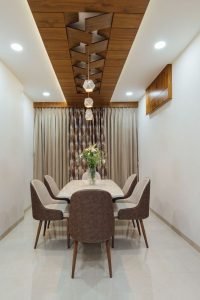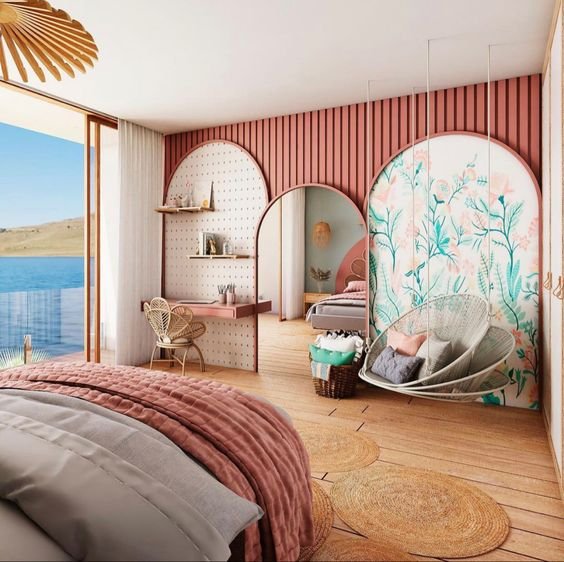Practical tips and ideas to beautify your false ceiling design
A false ceiling, also known as a drop ceiling or suspended ceiling, is a secondary ceiling installed below the main ceiling design. False ceilings are often used to conceal wiring, ductwork, and piping while creating a decorative focal point.
There are many different types of false ceilings made from various materials, including gypsum board, plasterboard, metal paneling, and PVC. When choosing a false ceiling design, it is important to consider the function of the space and the overall aesthetic.
If you’re planning to install a false ceiling in your home, there are plenty of design options to choose from. But with so many choices, it can be hard to know where to start. Here are some practical tips and ideas to help you beautify your false ceiling design. With a little creativity and effort, you can create a stunning focal point in any room of your home. Let’s get started!
Tips for False ceiling design

False ceilings are a great way to add extra oomph to your home décor. Not only do they make the room look more spacious, but they can also be used to hide unsightly wires and pipes. If you’re looking for some practical tips and ideas to beautify your false ceiling design, read on!
- Consider your lighting options
One of the most important things to consider during a false ceiling living room interior designer is your lighting options. You want to make sure that you have adequate light in the room, but you also want to create a pleasing aesthetic. Chandeliers and pendant lights are a great option for adding some glamour to your ceiling, while recessed or track lighting can be used to create a more contemporary look.
- Use different materials and textures

Another great way to add personality to your false ceiling is to use other materials and textures. For example, you could use wood, metal, or fabric panels or mix and match different materials for a more eclectic look. You can also use textured finishes to add interest and depth.
- Add decorative details
Decorative details are another great way to add personality to your false ceiling living room interior designer. You can use molding or trim to create a traditional look or go for something more modern with sleek lines and geometric shapes. You can also add features like embedded lights or mirrors to make the ceiling stand out.
- Plan for future changes
A false ceiling simple interior design for small
house is a great way to hide wires and other unsightly items, but make sure you plan for future changes so you won’t have to tear it down later.
- Opt for a minimalist look
If you’re after a more minimalist look, keep your false ceiling simple interior design for small
house simple and understated. You could go for a plain white or neutral color scheme or use minimalistic shapes and lines to create a sleek, modern look.
- Consider your needs and budget
There are a variety of materials and designs to choose from, so you can find one that fits both your needs and your budget.
If you’re looking for a way to add some extra style and personality to your home, a false ceiling design is a great option. These tips should give you a good starting point, but don’t be afraid to get creative and experiment with different ideas.
False ceiling design: Do’s
There are a few things you should keep in mind when designing a false ceiling:
- DO make sure all materials are fire-rated and meet safety standards.
- DO use a fire-resistant sealant to seal all joints and seams in the false ceiling.
- DO use lighting fixtures that are designed for use in a false ceiling, and make sure they’re securely fastened
- DO install smoke detectors and fire extinguishers in the room below the false ceiling.
- DO make sure the false ceiling is properly ventilated not to get too hot.
False ceiling design: Don’ts
To improve false ceiling design you should to avoid from
- DON’T leave any gaps between the panels or tiles in the false ceiling, as these can provide a path for fire to spread.
- DON’T overload the false ceiling with too much weight, as this could cause it to collapse.
- DON’T install the false ceiling in a room that’s already too warm, as this could cause the material to melt or deform.
- DON’T cover up any ventilation grilles or air ducts in the false ceiling, as these need to be left open for proper air circulation.
- DON’T use flammable materials in the false ceiling, such as PVC pipe or foam insulation.
FAQs
Is a false ceiling good for the home?

A false ceiling can be a great option for homeowners looking for a way to add some extra insulation to their homes. A false ceiling can help keep the heat in during the winter and the cool air in during the summer, which can help reduce energy costs. Additionally, a false ceiling can be a good way to hide wiring and ductwork, which can be helpful for homeowners who are trying to keep their homes as clutter-free as possible.
What is the life of a false ceiling?
False ceilings have a lifespan, and it’s important to be aware of them so you can plan and budget for replacements when necessary. The average lifespan of a false ceiling is 10 to 15 years. However, this can vary depending on the type of materials used, how often the ceiling is accessed, and the level of wear and tear it endures. If you’re thinking about installing a false ceiling in your home or office, be sure to factor in replacement costs, so you’re not caught off guard down the road.
Conclusion
Are you inspired to beautify your false ceiling? If so, be sure to take advantage of the many resources available to help you. With a little creativity and some expert advice, you can create a beautiful and unique false ceiling design that will perfectly suit your needs and style. Have fun with it!
False ceilings can add a touch of luxury and sophistication to any room. By following these do’s and don’ts, you’ll be able to create a beautiful false ceiling that will enhance the look and feel of your home.
READ NEXT: SIMPLE WAYS TO BEAUTIFY YOUR LIVING ROOM
RELATED TOPICS: home decoration items

